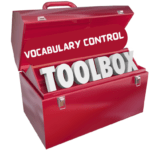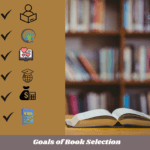There is no doubt that the library’s selection of books is highly dependent on the needs and requirements of the reader. The primary responsibility of the library is to evaluate and fulfill the evolving needs of its patrons, which is a challenging task. The selection process must adapt to changing needs and requirements, and it involves a significant level of risk. Text scientists have conducted extensive research on this topic, and research in this area is ongoing.

Different Theories about Libraries’ Book Selection
According to scientists’ research, various rules for book selection are being discussed.
Melvil Dewey:
According to Melvil Dewey’s definition of book selection in 1876, the best book at the lowest price should be selected for the largest group. Theoretically, there can be no disagreement about Dewey theory. The American Library Association (ALA) has designated this quote as the standard quote for book selection. According to Dewey, librarians in every library should carry out the book selection process very efficiently. The tasks to be done in this work are quality, book selection, reader satisfaction, and bringing books to the attention of informed readers with administrative skills.

L.R. McColvin:
In 1925, L.R. McColvin advocated that book selection should take into account the needs of the public, particularly in libraries. The responsibility and duty of the library are to identify needs, measure them, and meet them. According to him, it should have collections in proportion to demand at certain times. Also, MaColvin says the information in the book must be accurate. The book should be done in terms of content and subject scope. Differentiate between facts and opinions on the subject. The information should be up-to-date; the presentation of the content, the use of the book, and the writing style of the author should be fair.
Francis Drury:
In 1939, Francis Drury’s book “Book Selection” states that the best books should be selected for the lowest possible price, for the widest possible audience. Drury recommendations and Dewey recommendations play a key role in book selection. That is to say, there must be great knowledge of the world of books, knowledge of reader needs, and an efficient administrative system so that the book is transferred to the shelf immediately after the book selection process is completed. These are called complementary to each other.
Harold V. Bonny:
In 1939, Harold V. Bonny, in his book “A Manual of Practical Book Selection for Public Libraries,” expressed some practical and well thought out views on book selection. Although his recommendations are specific to public libraries, they can be applied to other libraries in many cases. According to Bonny, public libraries need to know the tastes and needs of local residents. Bonny also suggested that there should be a book selection committee consisting of experts on different subjects. The function of the committee will be to advice and the librarian will be responsible for the final selection.
Helen E. Haines:
Helen E. Haines’ “Living with Books: The Art of Book Selection” (1950) is considered one of the best books written on library book selection. According to him, “Books should be chosen to improve the quality of life and foster the growth of the local community, with a focus on meeting current and future needs. To build the library’s collection, prioritize high-quality, neutral books, and consider accepting donations instead of purchasing controversial titles. Special measures should be taken to meet the needs of expert readers, and focus on acquiring the best books on specific subjects, by particular authors, and from significant series. Instead of high-quality but less useful books, focus on collecting science, technology, social issues, and educational publications, including recent releases, to meet the demand for good and necessary reading materials.”
S. R. Ranganathan:
In 1952 S.R Ranganathan published the book “Library Book Selection”. Ranganathan gives a scientific concept of book selection. He used the five laws of library science previously published in his “Book of Library Selection” for book selection. The Five Laws of Library Science, published in 1931, help guide the selection process.
- Books are for use
- Every reader his book
- Every book its reader
- Save the time of the reader
- The library is a growing organism.
Wallace J. Bank and Roase Mary Magrill:
“Building Library Collections” (1974) by Bank and Magrill is a well-known standard book selection. They mentioned –“large libraries should allocate enough budgets for diverse reader needs, while medium-sized ones should spend judiciously to avoid unnecessary bulk purchases and maintain reputation. Small libraries, constrained by limited budgets and staff, struggle to meet reader demand with their collections. University libraries focus on meeting the needs of students and faculty by providing teaching and research materials. Special librarians collect subject-specific materials for research purposes tailored to the institution’s objectives. School libraries prioritize student needs, offering a range of materials aligned with classroom textbooks.”
David Spiller:
David Spiller’s “Book Selection” is an excellent book on book selection. Speller identifies two things about the ultimate goal of libraries: 1. Education 2. Demand .According to Speller first priority of education is to have quality books on all subjects. The best collection of literature on various subjects should be developed. Secondly, in the case of public libraries, the materials needed by the local people or the community should be collected according to the needs. The collection should always include new publications.
Robert Broadus:
Robert Broadus in his book “Selecting Materials for Libraries” (1973) prioritized three factors – what type of library, quality collection and needs.According to Rroadus, “Library promotion should stimulate demand and analyze factors influencing rapid spikes and declines in popularity. Emphasis on high-quality, timeless literary works across diverse genres is essential. Cancellation of books requires reasonable justification without infringing on readers’ freedom. Collection development guidelines ensure a balanced, inclusive collection, featuring books on controversial topics from multiple perspectives.”
Currently, various types of periodicals, reference books and various types of journals play an essential role in book selection. A variety of publications on the subject can be found by searching the database according to the subject.



